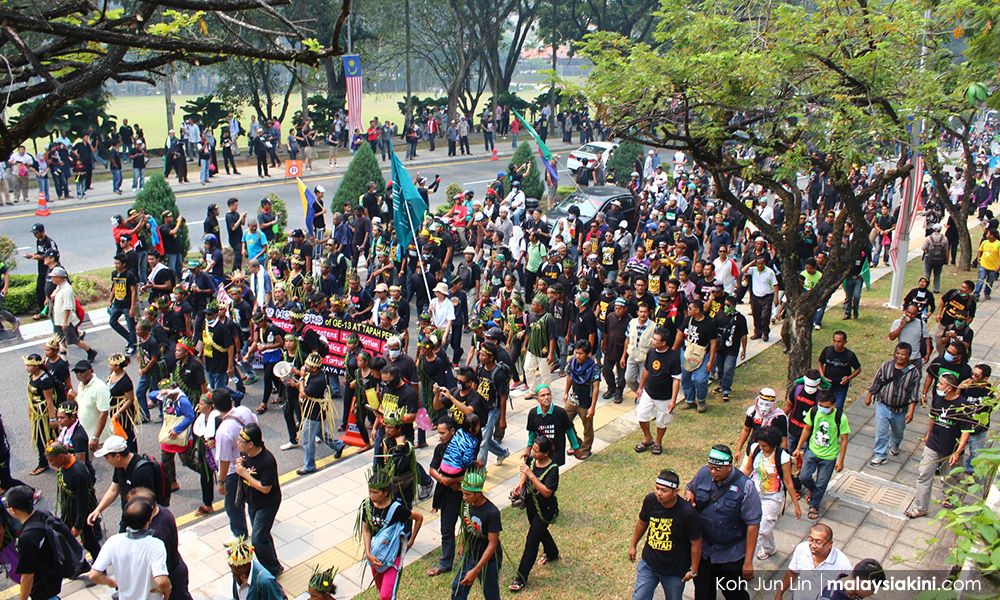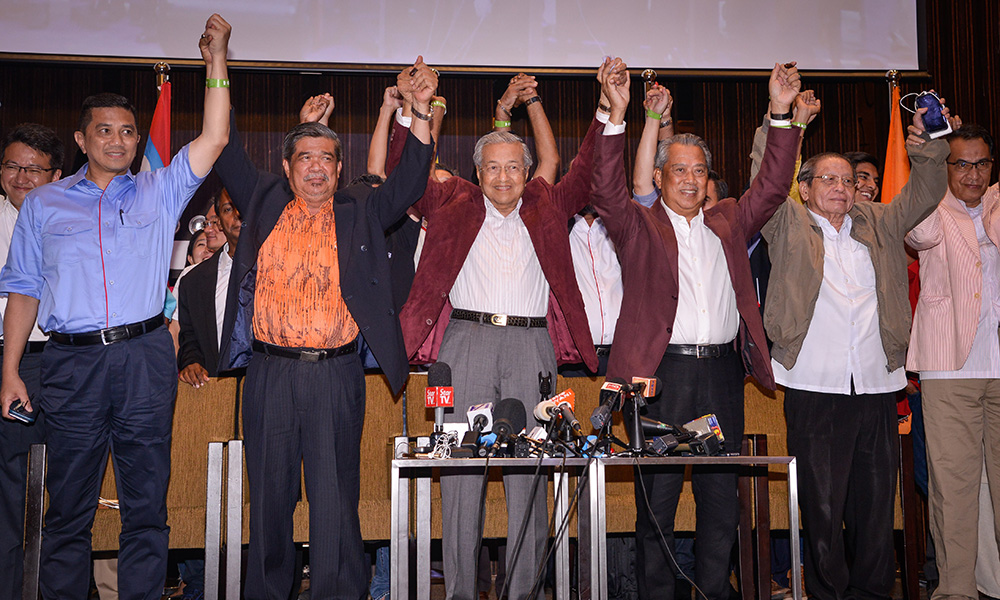Reliving the build-up to May 9 and the euphoria of that historic day
BOOK REVIEW | Published some six months after GE14, Kee Thuan Chye wrote The People’s Victory both to document and celebrate the events that led to that ground-shaking moment in Malaysian election history.
Few Malaysians bore much hope that the Barisan Nasional administration, grown bullying, lazy and corrupt after decades of practically unquestioned power, could be democratically toppled in a bloodless and peaceful general election. Yet it happened, so much so that many people could hardly believe the news.
Kee’s carefully researched book traces the entire story of how things came to a head with the Pakatan Harapan victory that Malaysians hoped would reset the entire direction and narrative of Malaysia.
Six months down the road, reading The People’s Victory evokes much of the earnestness and tension we experienced in the years leading up to May 9. It brings back memories of the intervening years between GE13 and GE14, and delivers a well-documented and informed narrative of all the key events that pushed Malaysians to vote as they did on that historic May 9.
In typical playwright fashion, Kee has divided his book into three parts, calling them Act 1 Despair, Act 2 Hope and Act 3 Euphoria.
In this ‘play’, the main players are figures all Malaysians know: politicians and leaders, both in the government and opposition. But the backdrop consists of the throngs called the rakyat, and it is this group to whom Kee pays tribute for the stunning toppling of the BN government.
Therefore, the title, The People’s Victory: How Malaysians Saved Their Country, says it all: GE14 was, essentially, a people’s movement. In May 2018, reform-minded Malaysians, en masse, moved from disempowerment to empowerment.
The rise of a strong opposition
Act 1 Despair is the play’s exposition. It lays the groundwork for GE14 by recounting the awakening of the Malaysian consciousness to the possibility of a change of government. Kee details the problems and issues that pitted those days comprehensively.
GE12 (2008) was the watershed general election that denied BN its customary two-thirds majority in Parliament. More amazingly, the then Opposition (Pakatan Rakyat) captured five out of the eleven states in Peninsular Malaysia.
The days leading up to GE13 were thus flush with hope and anticipation. The platform for the Opposition’s optimism pre-GE13 involved issues like Umno’s exploitation of race and religion, money politics and corruption, and what Kee humorously calls a “liability named Rosmah”.
GE13 brought public resentment rushing to the surface. Voter turnout was the highest ever recorded in Malaysia at 84.8 percent. Victory was imminent. The Opposition’s defeat, therefore, though it had garnered the popular vote, was bitter and crushing.

But arising out of voter disappointment were the Black 505 rallies (“festival of madness”), launched on May 8. While these protest rallies could not ultimately change the GE13 results, their impact would be keenly felt. The Opposition challenged the election results in court but little good came out of that.
Other incidents post-GE13 that Kee highlights underscore the urgent need for change; among them, Anwar’s imprisonment, Malaysia’s dismal ranking in the 2014 World Press Freedom Index, the introduction of the dreaded GST, Najib’s frivolous kangkung remarks over rising costs of living, and the government’s blatant abuse of the Sedition Act.
Despair also dogged Pakatan Rakyat as the troubled coalition battled internal problems. Kee describes critical events of that period such as the infamous Kajang Move and the Selangor MB crisis, the breakup of PAS, and finally, the demise of Pakatan Rakyat.
Yet out of the proverbial ashes rose new life. The ousted PAS progressives morphed into Amanah and days later, the Opposition formed a new pact to replace Pakatan Rakyat called Pakatan Harapan.
Four-letter scandal that shook Malaysia
Where despair imbues the atmosphere of Act 1, Act 2 Hope, begins with an ironic glimmer of hope “in the form of a simple abbreviation – 1MDB.”
Kee drives the narrative forward with two chapters (“The Big Steal” and “Rule by Thieves”) devoted to this earth-shattering “mother of all scandals - in 2015, stunned Malaysians realised that Malaysia was spiralling uncontrollably into full-blown kleptocracy.
But 1MDB would soon prove to be one of the core reasons for the undoing of former premier Najib Abdul Razak and Co.
The narrative pace picks up with the re-emergence of an angry Dr Mahathir Mohamad and his dramatic return to the political stage as Najib’s nemesis. Kee is highly critical of Mahathir’s past, but depicts him very ably and fairly against the backdrop of GE14.
Challenging issues confronting the lead-up to May 9 still rage in our minds, like the blatant malapportionment and gerrymandering (that carried on regardless), Najib’s ridiculous Anti-Fake News act, the Wednesday polling day, and the many trials affecting overseas postal voters.
Victory for the people
Kee sets the stage for Act 3 with this stacking up of issue upon issue charged with the people’s anger and resolve in Act 2. The dramatic action has reached a head. Would its resolution be in favour of the rakyat? Or would it be GE13 revisited?
The question is answered now, of course. Act 3 Euphoria is two chapters long. The first chapter, “Like Watching a B-Movie Western,” reflects the unbelievable tension as Malaysians held their breath and cast their ballots, followed by exhilaration after a night of nail-biting anguish watching the election results on Astro Awani.

At last, the news trickled through: Pakatan Harapan had won! The inconceivable had come to pass. Euphoria indeed! Kee writes of his response, emotion-filled like many Malaysians’:
PH has won! Umno-BN is kicked out at last. After 61 years! We are liberated at last. I never thought I would live to see this day! I weep with joy uncontrollably.
And in my heart I say, “This is the real Merdeka!”
Kee’s last chapter is titled “We Did It!” and comes back full circle to his book title, The People’s Victory. In this finale, he attributes the victory ultimately to the desire and support of the people for change, not just to the main players on stage:
This was their victory. They took responsibility for their country. They took it back from the kleptocrats and kakistocrats …. This was the victory of the people.
A victory of the Malaysian people.
And at last, the play is done, its confrontation resolved in the heady victory of GE14. We put the book down with a happy sigh, gratified by the catharsis that The People’s Victory has provided.
Writing the book was a mammoth task, Kee acknowledges. But he dealt with large, complex political and social issues that galvanised Malaysians towards epic change in 2018, and did it in a way that was comprehensive, careful, yet engagingly conversational, personal and immediate. He told a story and he told it very well.
WONG MING YOOK taught English Literature in the University of Malaya, and has previously reviewed books for New Straits Times and The Star. She is also a keen reader of Malaysiakini.
The views expressed here are those of the author/contributor and do not necessarily represent the views of Malaysiakini.
RM12.50 / month
- Unlimited access to award-winning journalism
- Comment and share your opinions on all our articles
- Gift interesting stories to your friends
- Tax deductable
